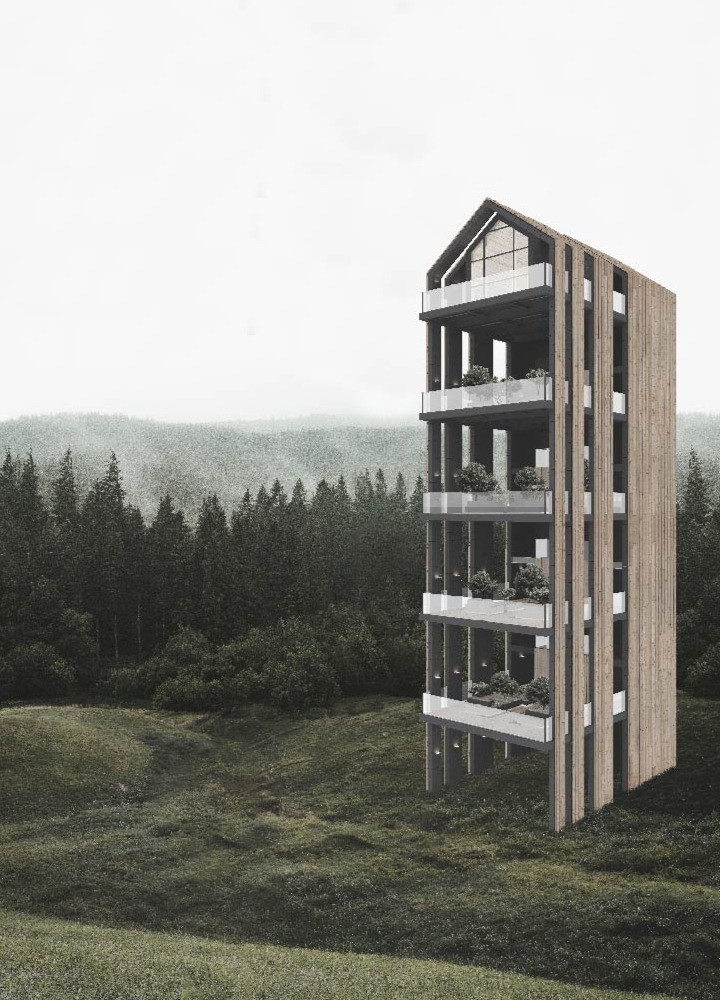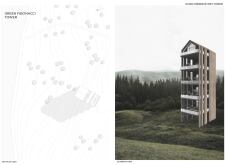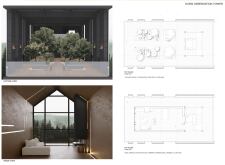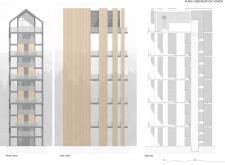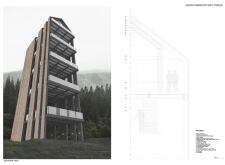5 key facts about this project
The Kurgi Observation Tower, known as the Green Fibonacci Tower, is located in an area that offers broad views of the surrounding landscape. It serves as both an observation point and a community space for visitors. The design highlights a connection to nature and creates an open environment where people can gather and enjoy their surroundings.
Design Concept
-
The main characteristic of the tower is its panoramic terrace, which invites visitors to take in the sights from a higher vantage point. This feature not only enhances the experience of observing the landscape but also encourages social interaction. The internal layout of the tower allows for easy movement and accessibility, with both stairs and an elevator seamlessly incorporated into the design.
Materiality
-
Materials used in the Kurgi Observation Tower play a significant role in its overall structure and appearance. Black locust slats add to the visual appeal while ensuring sustainability. The steel bearing structure gives the building the necessary strength to support various configurations, contributing to a modern look that is both functional and visually appealing.
Sustainability Features
-
Energy efficiency is a key consideration in this design. Rock wool insulation improves thermal performance, making the building comfortable year-round. The multilayer wooden load-bearing panels add durability and strength. The use of airtight shoots and fiberglass insulation helps in conserving energy, aligning with contemporary practices focused on sustainability.
Structural Details
-
The combination of internal wood finishes and external black panels creates a cohesive and balanced appearance. Safety is addressed through glass railings, which offer protection while keeping the views unobstructed. T-shaped steel anchors, along with secondary and primary steel beams, provide crucial support, allowing for the tower's unique architectural shape.
The design integrates green spaces, inviting visitors to engage with the natural environment. This thoughtful layout emphasizes both function and environmental awareness, ensuring that the Kurgi Observation Tower is a meaningful addition to its landscape.


